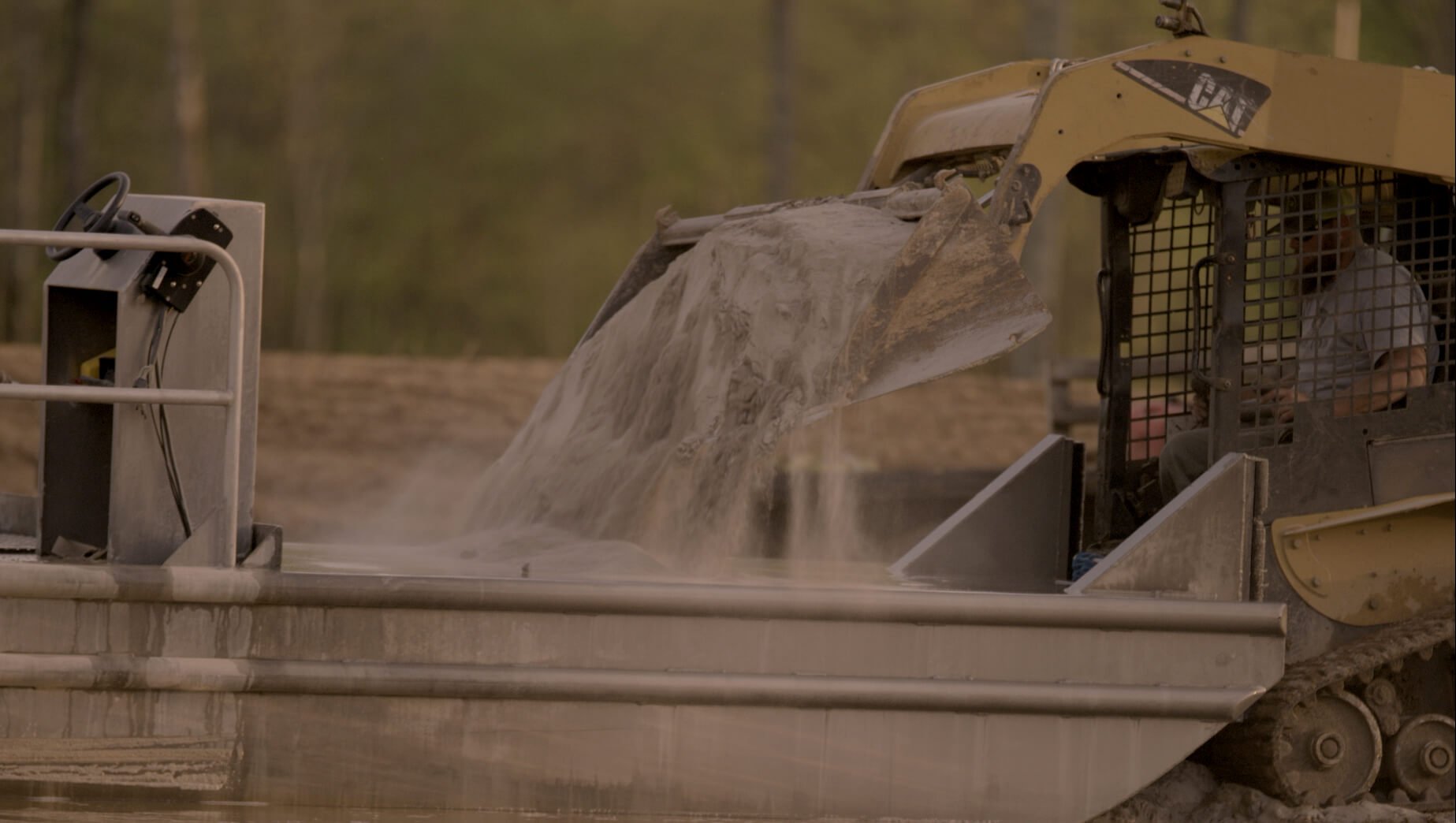
POND LIMING & FERTILIZATION
Pond liming is essential maintenance for ponds and lakes with aquatic life because it maintains the alkalinity and pH at optimal levels for fish health and a thriving food chain. Ponds with low alkalinity are subject to wider swings in pH throughout the day, which is stressful to fish. Ponds with alkalinity below 20 parts per million typically do not respond to fertilization, severely limiting the pond’s food chain and, therefore, the pond’s overall carrying capacity.
Pond Liming.
The average pH of rainfall in the U.S. is below 5, which is highly acidic. As a result, ponds not fed by springs or streams tend to become acidic over time. pH below 5.5 severely limits the survival of the eggs and fry of most freshwater species, including largemouth bass and bluegill; low pH and low alkalinity both lead to increased susceptibility to disease for most freshwater fish species. We have seen dramatic turnarounds in the fish populations of private ponds and lakes many times just from the application of pond liming. This one substance can differentiate between an ailing pond and a healthy one.
Turbidity.
Pond liming is also a valuable tool in clearing turbid water. Because bluegill and largemouth are sight feeders, they typically do not grow well in muddy water; clay turbidity can short-circuit the entire ecosystem. Ag lime can take a pond from looking like chocolate milk to that perfect deep green color in a matter of days.
How much lime?
Agricultural lime should be applied at a rate of two to six tons per acre, depending on how low the alkalinity is at the time of application. The best way to apply lime to ponds already containing water is by using a lime barge, which employs a high-pressure sprayer to disperse the lime evenly throughout the pond.

